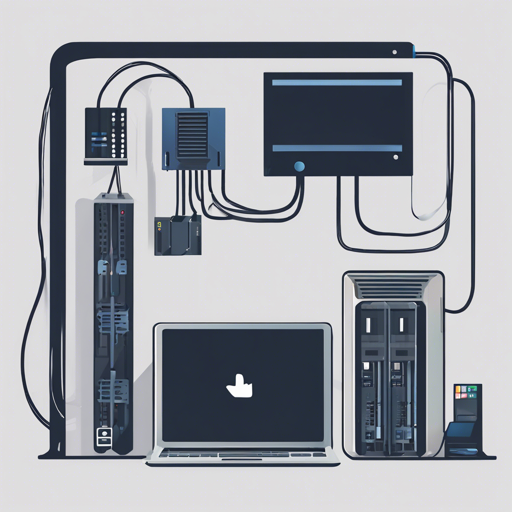If you’re looking to deploy a headless system using Alpine Linux, you’re in the right place! Setting up such systems can seem a bit tricky initially, especially when they’re designed to operate without any direct monitor or keyboard connection. But worry not! In this guide, we will walk you through the setup process, along with some troubleshooting tips to get you on the right path for remotely managing your Alpine Linux instance.
Why Use a Headless System?
Headless systems are great for many reasons, but primarily because they allow you to manage your devices over a network. Imagine you want to set up a new server or a device in a remote location without dragging your laptop to it. A headless setup lets you establish a connection and complete your installation from the comfort of your own workstation.
Setup Procedure
Here’s how you can bootstrap your headless Alpine Linux system following a series of simple steps:
- First, visit the Alpine Linux Wiki to download and create installation media for your target platform.
- Add the headless.apkovl.tar.gz overlay file. Make sure to place it at the root of the Alpine Linux boot media or any custom side-media.
- Boot up your system with the installation media.
- Once the setup starts, it will automatically initialize an SSH server. You can access it using
ssh root@IP_address, where IP_address is your system’s IP (which can be found using tools like nmap). - Be mindful that by default, the root account does not have a password. It is critical to set one up during your installation!
Extra Configuration Options
For further customization of your Alpine setup, you can include several optional files next to the headless overlay:
- wpa_supplicant.conf: This is mandatory for WiFi. You’ll define your WiFi SSID and password here.
- unattended.sh: An optional script to automate the setup of initial configurations.
- interfaces: If you want to define network interfaces manually, include this optional file.
- authorized_keys: Provide your client’s public SSH key for secure root SSH login. This is optional.
- ssh_host_*_key*: Use this to inject your custom SSH keys, making the process more secure.
- opt-out: A dummy file to opt-out of telemetry features.
- auto-updt: This allows automatic updates from the master branch. If it contains the keyword “reboot” on a single line, your system will reboot automatically post-update.
Understanding the Bootstrapping Process: An Analogy
Think of bootstrapping your headless system like setting up a smart home device without being physically there. You need to ensure that the device gets connected to the WiFi network seamlessly. Just as you would send an initial configuration to your smart device, the headless system uses an overlay file during boot-up to initiate an SSH server for remote access.
This configuration allows you to log in from another computer, just like you would remotely control your smart home system through an app. Once this connection is established, you can perform all the necessary installations and configurations just as if you were directly at the device.
Troubleshooting Tips
If you run into issues while setting up your Alpine Linux system, here are some troubleshooting ideas:
- Ensure that your network connections are functioning correctly and that the IP address of your system is accessible from your management computer.
- If your SSH connection is failing, check your setup-alpine script to ensure that everything is configured as intended.
- Examine the logs using
cat /var/log/messages | grep headlessfor any error messages during boot-up. - Always remember to change the root password once you have access to secure your system.
For more insights, updates, or to collaborate on AI development projects, stay connected with fxis.ai.
Final Thoughts
Bootstrapping a headless system may at first seem daunting, but once broken down into steps, it becomes manageable and efficient. At fxis.ai, we believe that such advancements are crucial for the future of AI, as they enable more comprehensive and effective solutions. Our team is continually exploring new methodologies to push the envelope in artificial intelligence, ensuring that our clients benefit from the latest technological innovations.
Now, go ahead and deploy your headless Alpine Linux system with confidence!

